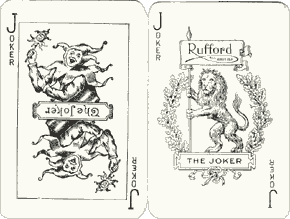De La Rue
De La Rue introduced letter-press printing into playing card production and his patent was granted in 1831. He produced his first playing cards in 1832.

a brief history of De la Rue’s playing-cards
Thomas de la Rue (24 March 1793 – 7 June 1866) was born in a small hamlet in Guernsey called Le Bourg in 1793, the seventh child (of nine) of Eleazar and Rachel de la Rue. At the age of ten he was apprenticed to his brother-in-law Joseph Antoine Chevalier, a master printer in St Peter Port who produced the Gazette de l'Île de Guernsey, the first printed newspaper on the island. During this period Thomas gained a thorough knowledge of printing. In 1818 he moved to London with his family and set up shop initially as a straw hat manufacturer, but he soon diversified into bookbinding and the embossing of leather, and then into paper manufacture. By around 1828 his interests had moved to playing cards and he began to put everything he had learnt into practice. De la Rue introduced letter-press printing and certain other ‘improvements’ into playing card production and was granted a patent in 1831. He produced his first playing cards in 1832 and over the years came to be recognised as the inventor of the modern English playing card.
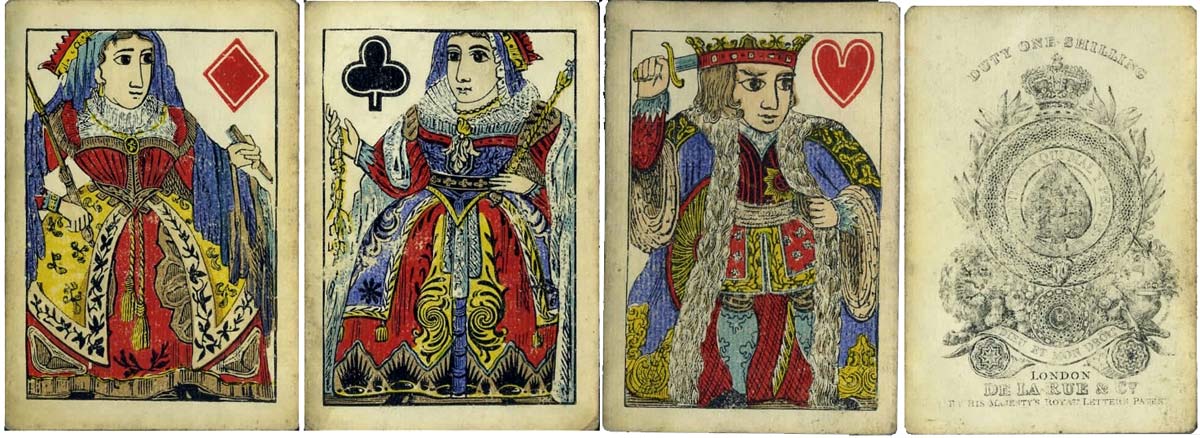
Above: De la Rue's early letterpress playing cards c.1832. The court figures are full-length but with several non-standard idiosyncrasies such as the king of hearts turned facing towards the right and the queen of diamonds holding a sceptre and a fan. All the suit symbols have a white overlay border in this version. The 'Old Frizzle' Ace of Spades carries the duty of one shilling at the top and has the text "By His Majesty's Royal Letters Patent" printed at the bottom which had been granted to Thomas de la Rue by King William IV for 'certain improvements in making or manufacturing and ornamenting playing cards.' This Ace, with the extra legend, was registered in August 1832, whereas before the patent was granted a normal 'Old Frizzle' Ace was used. The Aces of Spades were printed in the Stamp Office at Somerset House and an account of the numbers of Aces was kept there by the authorities. Image courtesy Ken Lodge.
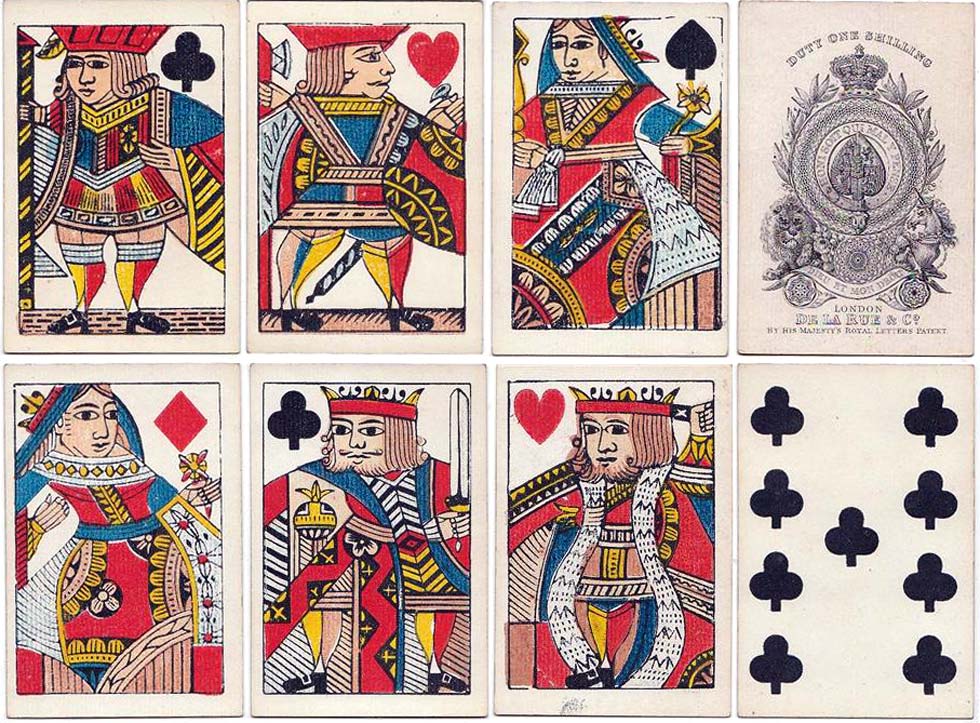
Above: another of De la Rue's earliest packs of playing cards c.1832, printed by letter-press but imitating traditional woodblock printing. The court figures are full-length. The 'Old Frizzle' Ace of Spades carries the duty of one shilling at the top and has the same text as the above example.
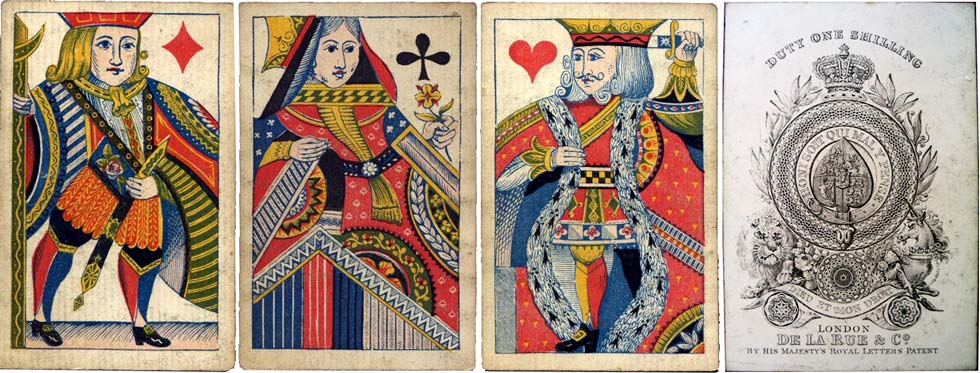
Above: a redrawn set of single-ended court cards with more intricate patterns on the clothing, printed typographically, which became the basis for all later double-ended courts. In this case the cards are in the slightly smaller Piquet size, with Continental style suit symbols.
Up til this time playing cards had been printed from woodblocks and hand-coloured using stencils. De la Rue's ‘improvements’ included quicker drying coloured inks, improved glazing technology and the use of enamelled paper. Learn more →. An article in Bradshaw's in April 1842 reported that “The whole of Messrs De la Rue's establishment is carried out in a manner perfectly unique. Steam power wherever practicable is applied to the various departments of the business.” Between 1856 and 1868 the De la Rue output of playing cards rose from 93,060 packs in 1856 to 265,048 packs in 1868.
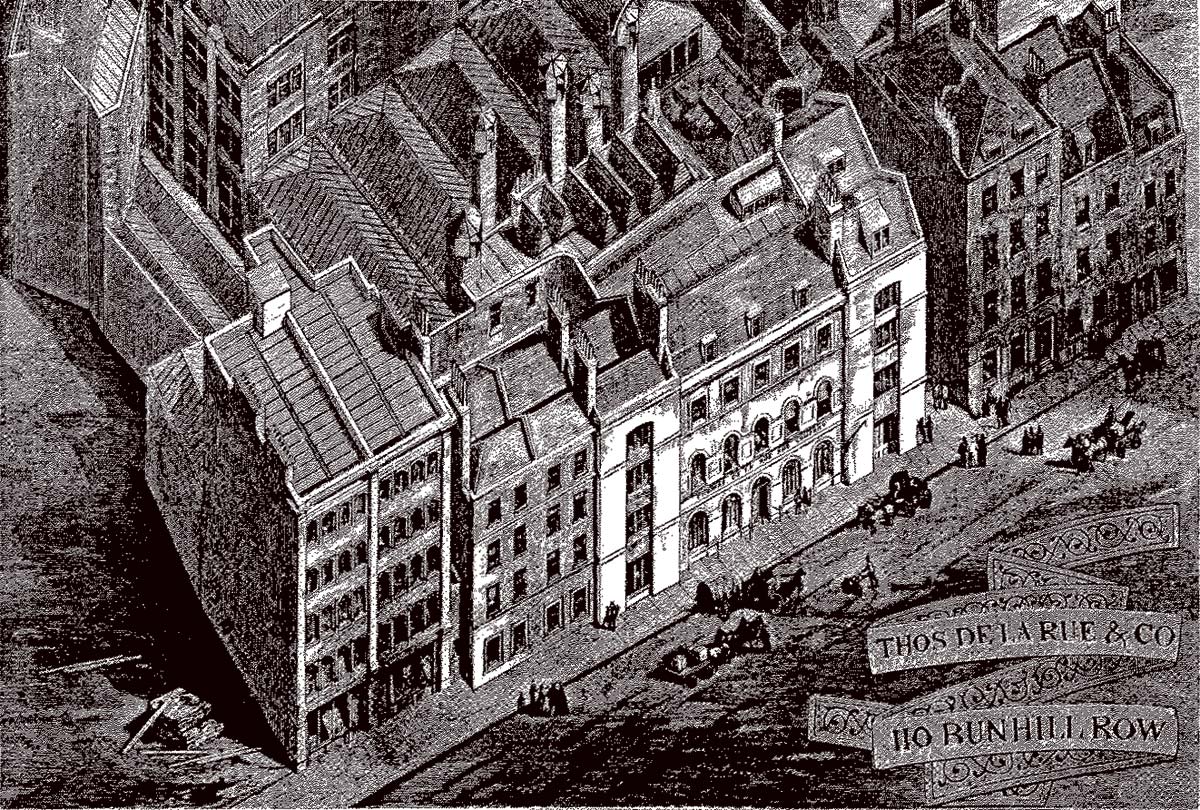
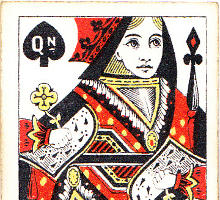
Above: 'Pigmy' playing cards with 'Dexter' indices, c.1890.
In 1844 Thomas de la Rue employed the graphic designer Owen Jones who in the ensuing 20 years produced 173 outstanding back designs for De la Rue ranging from fruit-and-flower themes to Chinese and Arabesque. Owen Jones also designed playing card backs for Lawrence & Cohen (USA) and his designs were imitated by other manufacturers. From 1840 until 1856 playing cards remained the firm's chief money maker and this provided a financial basis for any new fields of activity that De la Rue wished to enter. In any publicity material playing cards, their most lucrative product, received pride of place, and in 1853 Charles Dickens extolled the firm's excellence in an article called ‘A Pack of Cards’¹ which included a history of playing cards and De la Rue's part in it. Thomas de la Rue became known as ‘the father of the English playing card’.
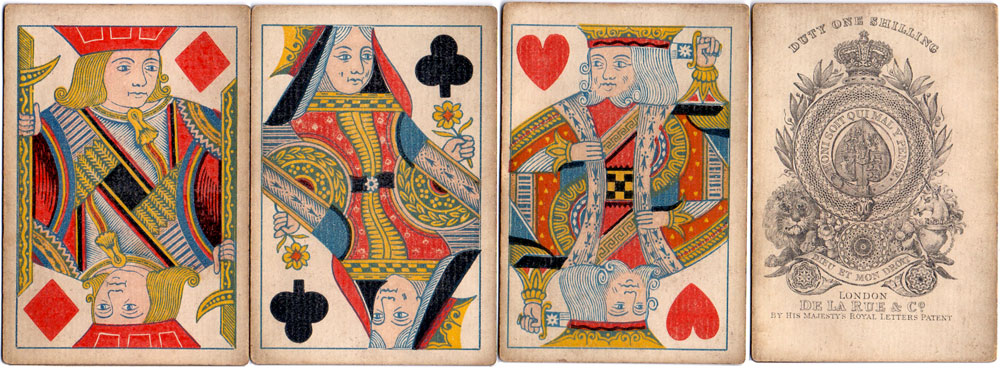
Above: a standard double-ended pack manufactured by De la Rue in c.1860… no indices, square corners. As in the examples shown above, the 'Old Frizzle' Ace of Spades refers to De la Rue's patent, granted in 1831. Click here to see more cards c.1900
Right: during the period c.1870-1890 indices were being introduced on playing cards. Packs are sometimes found with hand-written indices where players have improvised in interesting ways.
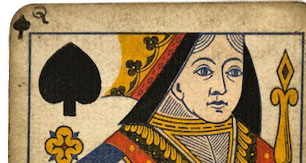

Above: very small indices with '1' for the ace, c.1885-1890. Courtesy Matt Probert. (Click to zoom)
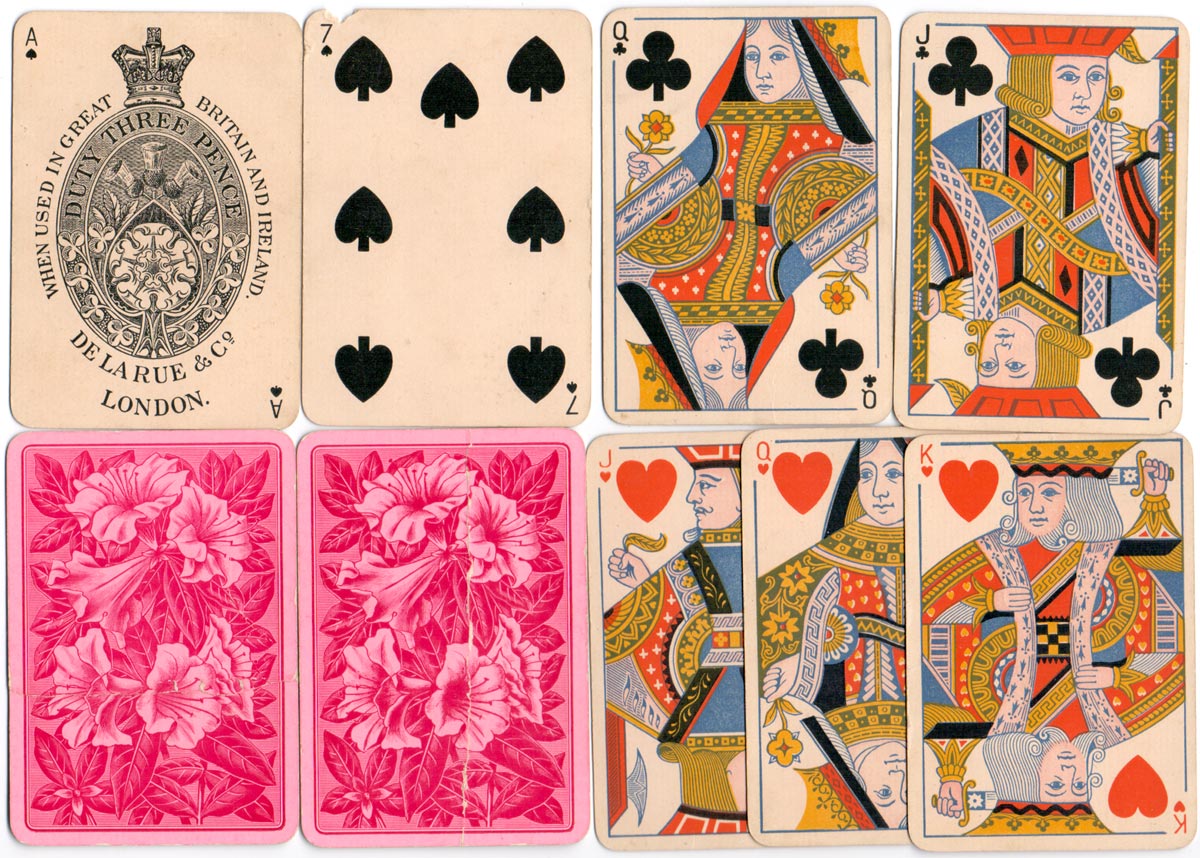
Above: standard double-ended Bézique pack with rounded corners and small indices, c.1890-1900. Some of the court cards have been turned so that all the suit symbols are at the top left-hand corner.
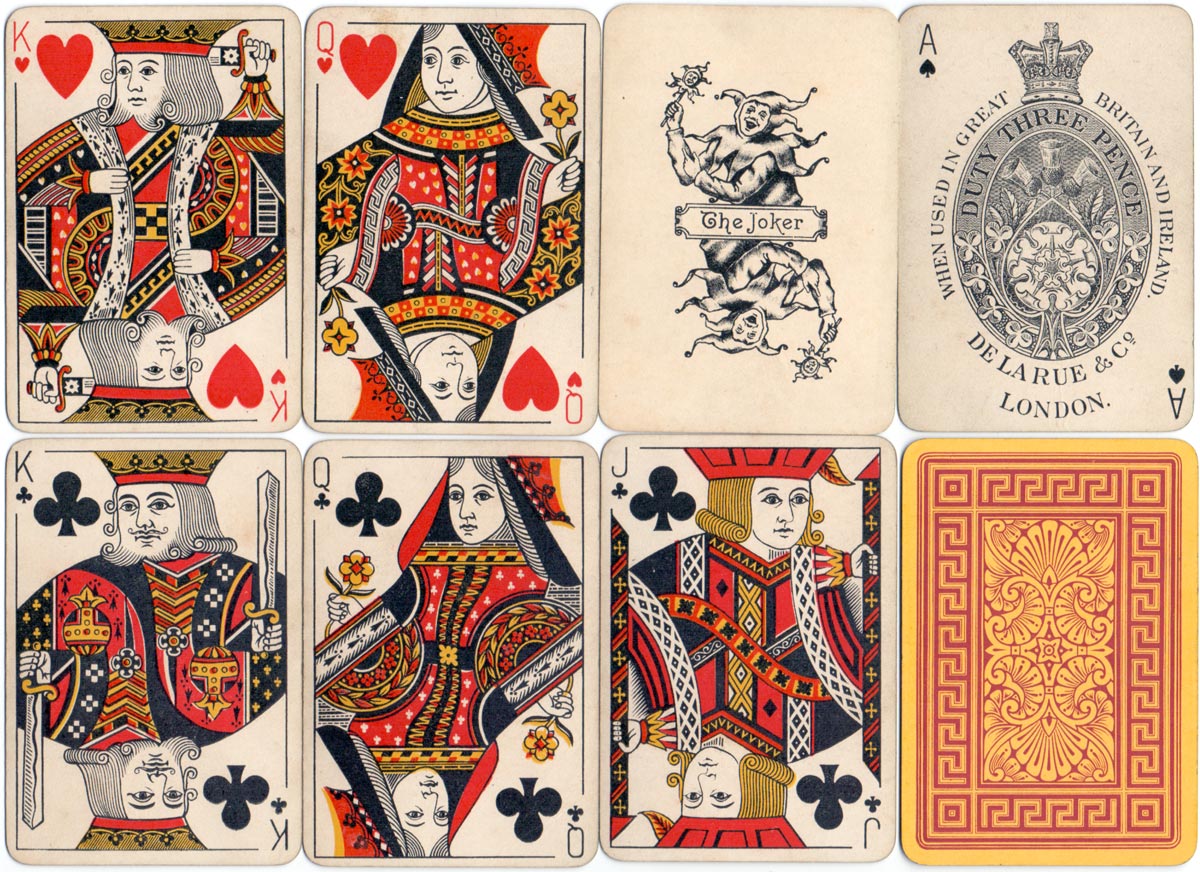
Above: standard 52-card pack plus joker, with rounded corners and slightly larger indices, c.1900.

Above: De la Rue & Co's “Patent Ivory Playing Cards” in their tax wrapper, with the “King Henry the VIII” wrapper showing beneath, c.1900.
Besides manufacturing playing cards and card games, the firm also printed railway tickets and visiting cards for which he used his enamelled playing-card paper. De la Rue’s card games were of the highest quality and tended to be expensive. De La Rue became the principal printer of fiscal, inland revenue and postage stamps and banknotes for the UK and colonies, and over the years the best engravers and miniature designers worked for De La Rue.
In the 19th century, England was the principal exporter of playing cards to Russia and the name of De La Rue figures prominently in this connection. In 1842 Thomas De La Rue's youngest brother Paul was appointed superintendent of the Russian royal playing card monopoly and the Russian establishment became an important customer of De la Rue, and was the firm's first overseas trade... learn more →. American and Belgian court card designs have been influenced by De la Rue, and for example, Lawrence & Cohen also enjoyed the services of Owen Jones, one of De la Rue's graphic designers. De la Rue opened a New York office and a Parisian office and during the period 1867-70 De la Rue published two non-standard packs specially designed for the French market →. See also: “International Playing Cards”, 1874. De La Rue also manufactured packs for Denmark and Iran during the 1930s.
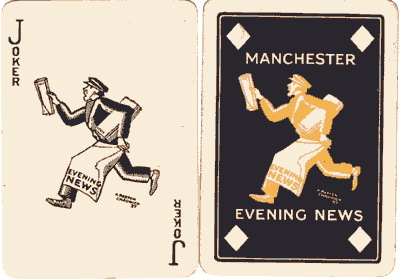
Above: Assorted playing cards made by De La Rue. 'Rufford' packs were made especially for Boots the Chemist, c.1926-55 see also→
In 1921 Charles Goodall & Co. were absorbed by De La Rue. Playing cards had become more popular during World War I and there was now a great demand. The Goodall plant in Camden Town became a subsidiary of De la Rue and their well-known brand names were maintained by De la Rue. However, the duplication of efforts was a drain on profits and this was a disappointment to shareholders. At the same time the General Strike and the depression exacerbated the Company’s condition. During the early 1930s De la Rue helped out by making cards for Waddingtons during the Wills gift scheme, where miniature cards were tucked into every packet of ten Goldflake or Capstan cigarettes which could be exchanged for full-sized packs, and the firm's playing card profits began to pick up. See also: Mardon Son & Hall →

Above: ‘Q’ Playing Cards, supposed to stop an opponent getting a peep at your cards, 1930s.

Above: Film Star Playing Cards by Thomas de la Rue & Co., Ltd for Metro-Goldwyn-Mayer, 1933 see more →
In late 1940 the old De La Rue printing works at Bunhill Row in London was destroyed by air raids. So from 1941 onwards the printing of De La Rue’s playing cards was undertaken by Waddington’s in Leeds. During this period of close cooperation, packs of cards were produced containing components of both companies. For example, a standard De la Rue brand pack with a De la Rue ace of spades and joker might also contain Waddington’s courts, and so on. The two companies joined forces and became The Amalgamated Playing Card Co on a 50-50 basis, but in 1971 De La Rue sold out to Waddington's, who then became Britain's leading playing card manufacturer. See When Three Brands Merge►
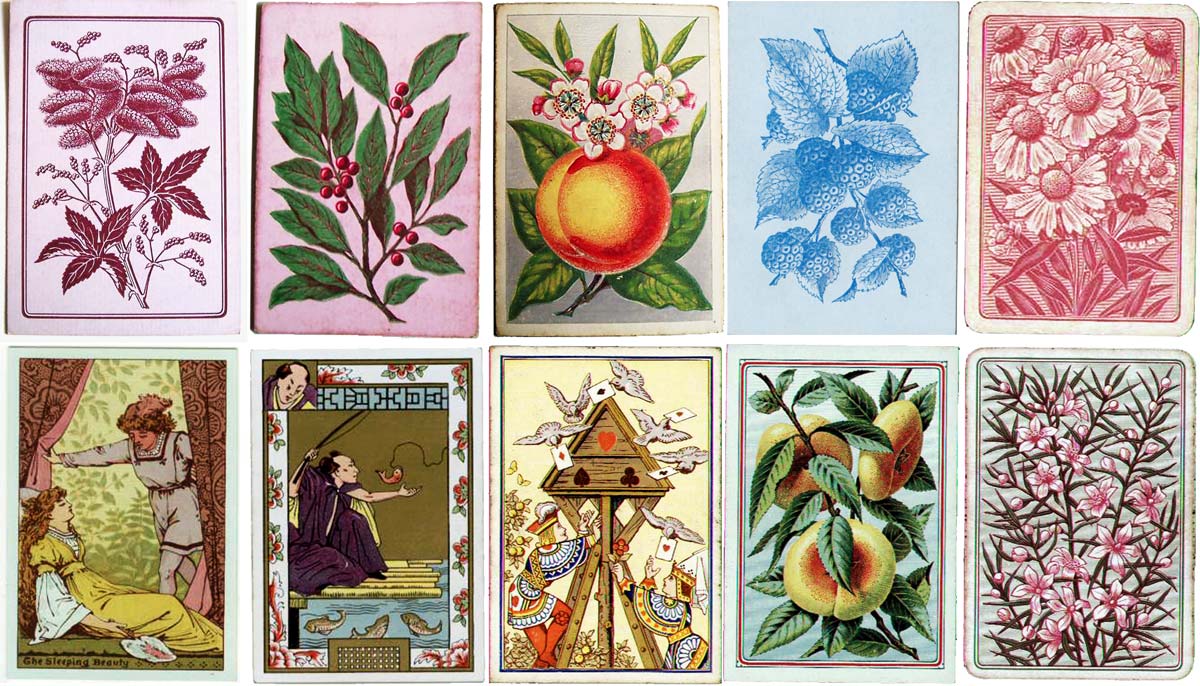
Above: assorted nineteenth century back designs by Thomas de la Rue & Co., Ltd. See also: Owen Jones • ‘Lacquer’ Playing Cards, c.1890.
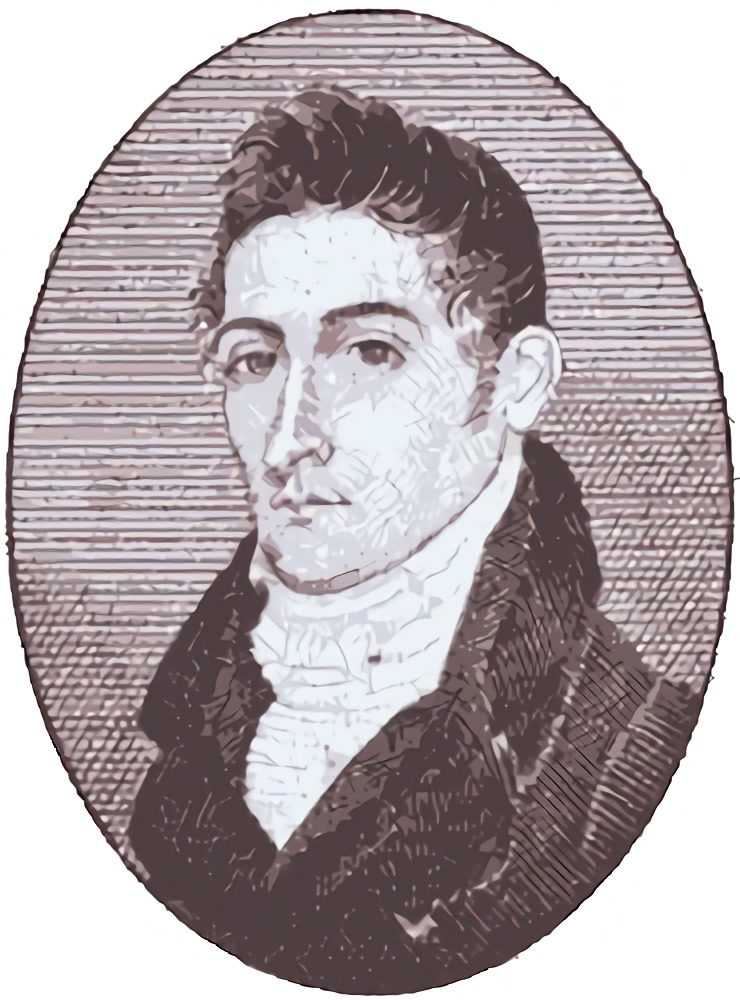
Thomas De La Rue (1793-1866)
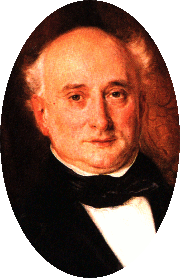
Thomas De La Rue (1793-1866), pioneer printer of the Victorian era, an historic figure for playing card collectors and philatelists.
(Click to view full portrait)
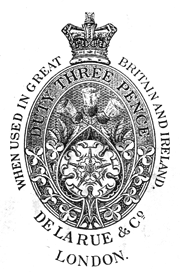
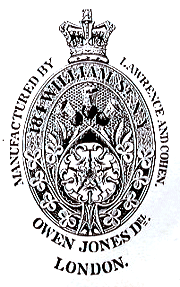
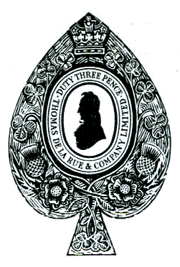
Above: aces of spades c.1955-1969
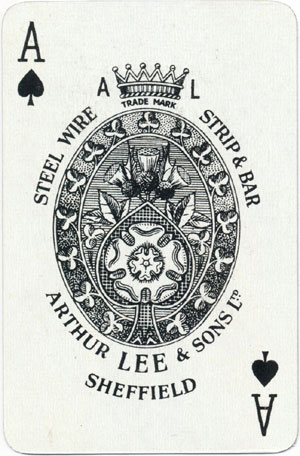
Above: special ace of spades produced for Arthur Lee and Sons Ltd, c.1958.
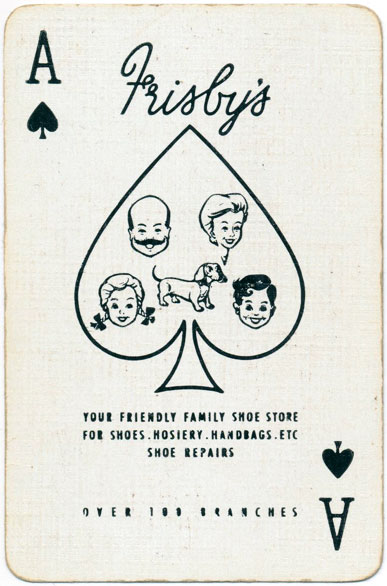
Above: special ace of spades produced for Frisby's Shoe Store, c.1955.
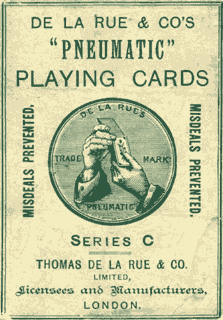
Above: "Pneumatic" playing cards were another of De la Rue's patented innovations.
Card Games

De la Rue’s card games were of the highest quality.
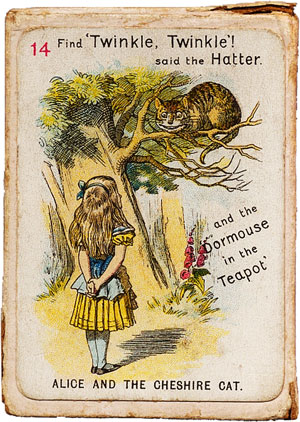
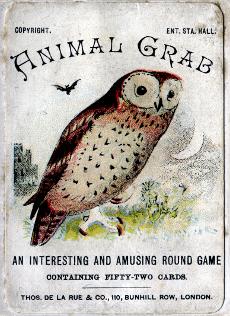
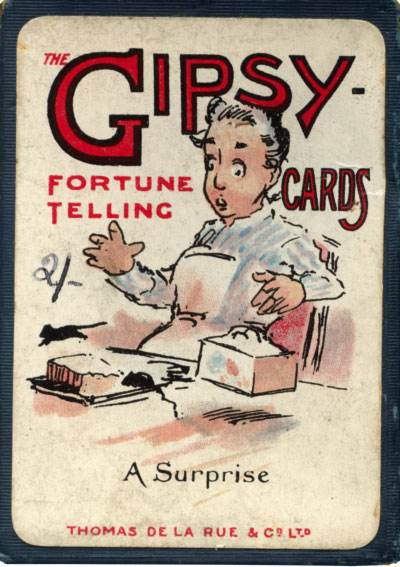
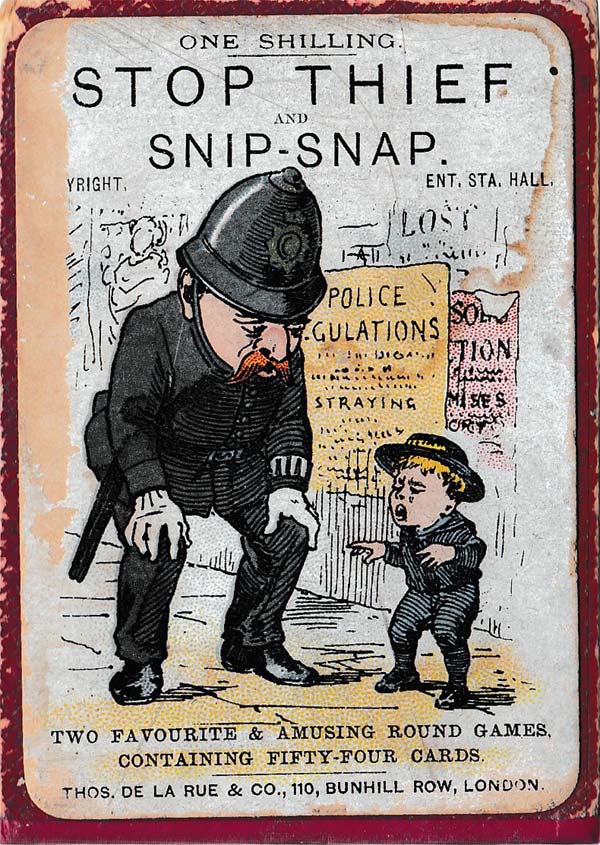
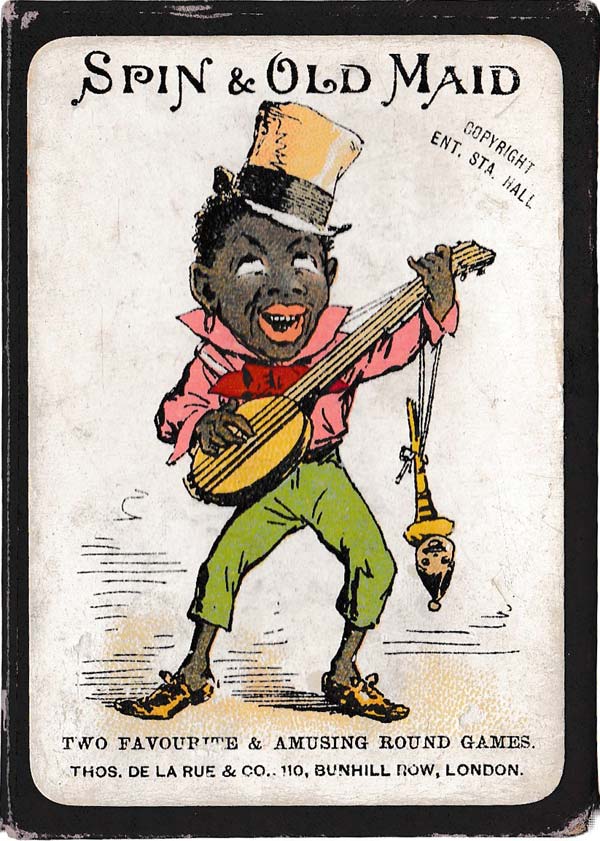
See also: Drole • Rūfa • Moods & Faces • Cheery Families • Little Jack Horner Snap • Bread & Honey • Golliwogg • Iddy Umpty • Jungle Jinks • Noah's Ark • Peter Pan • Tempest • Kikit • Cavalry Game • Electrical Mah Jong • Lobo • Travel Agent •
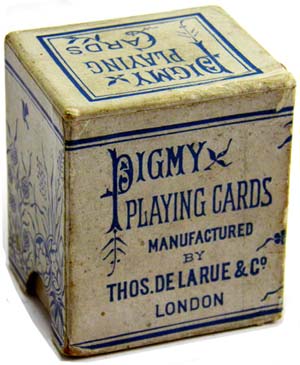
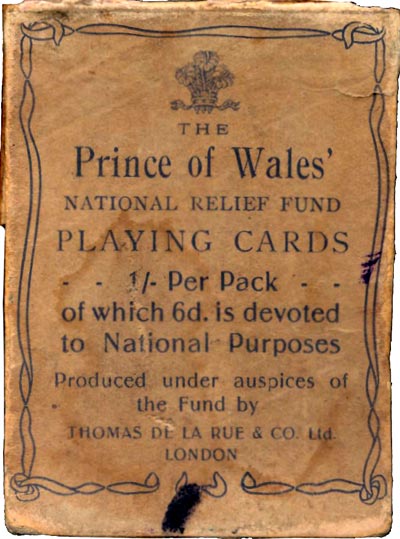
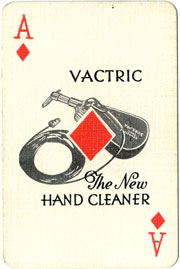
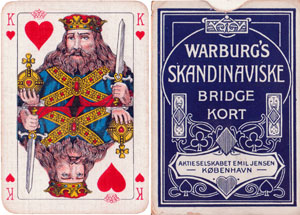
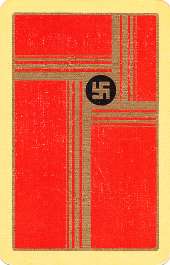
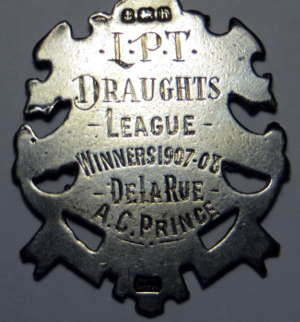
Above: memories of a former playing card cutter who worked for De la Rue c.1880-1920.
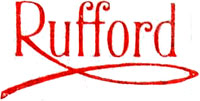
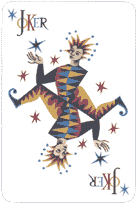
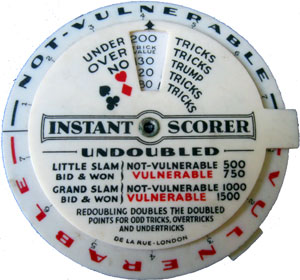
Above: 'Instant Scorer' from after when Contract Bridge became THE game to play. Judging by the materials and script, c.1950s/60, but earlier if made from celluloid. Image courtesy Kate MacDonald.
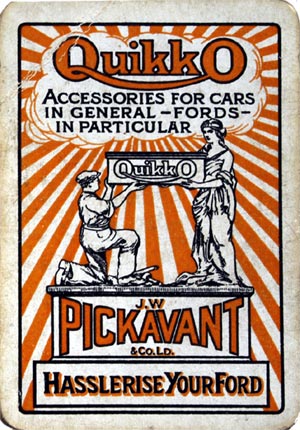
De La Rue's “Cheery Families” designed by Richard Doyle
The aura of domesticity which surrounded Queen Victoria and her Consort spread down the social scale, and card playing was one of the pleasures which could be shared within the large Victorian family circle. In the peaceful days before radio and television, card games were the unrivalled way of passing the time. Learn more →
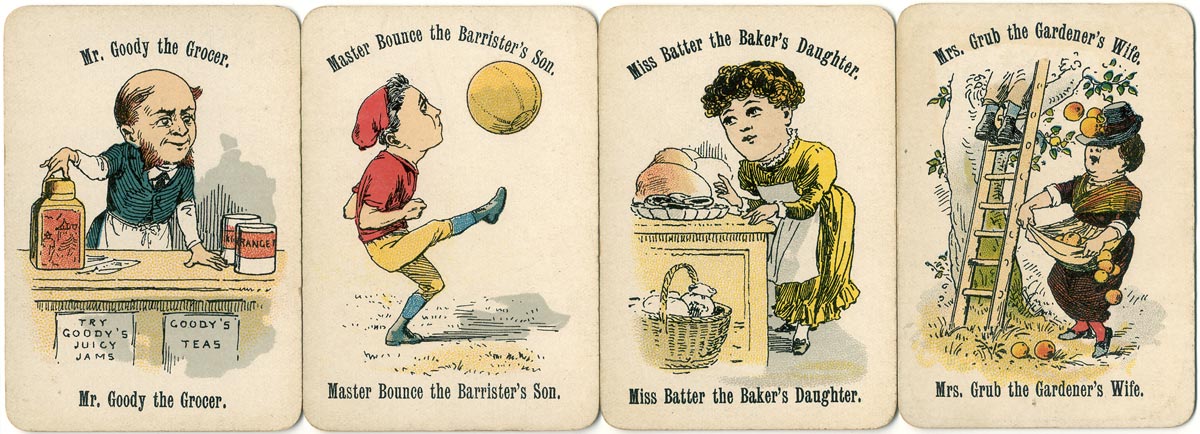
Above: Cheery Families children's card game designed by Victorian artist and illustrator Richard Doyle, manufactured by De La Rue, London, c.1890. See more →
The company that started life producing straw hats and playing cards almost two centuries ago has become a world leader in high security printing and payment systems technology. Thomas De La Rue International Ltd specialised in the manufacture of banknotes and other security documents, printing, currency counting machinery and money dispensers. It also has interests in the design and sale of banknote printing machinery. Click here to visit De La Rue's Corporate History website.

On Monday, 30th November, 1970, the entire De La Rue collection of playing cards was sold at auction by Sotheby's for £12,000 to the Fournier collection, Spain.
Note: ¹ There was an article called 'A Pack of Cards' in 'Household Words' 18/12/1852, which Dickens edited but the actual article is attributed to a George Dodd. [Source: Charles Dickens Museum].
See also: Letterpress Printing • Owen Jones • Empire Card Co • De la Rue Bézique c.1910 • Flaxette “Reflex” • Vactric Vacuum Cleaners “International Playing Cards” • Iranian Playing Cards • 125th Anniversary • Jean Picart le Doux • New Zealand Shipping Company, c.1955 • P & O, c.1955 • Black & White Cigarettes, c.1955 • British Road Services, c.1958 • Dalziel Foundry, c.1958 • British Gas Council, c.1962 • R.M.S. Windsor Castle • De La Rue Games • Packs designed for French market • Packs for Denmark • Pneumatic playing cards • Pigmy Playing Cards • Alice in Wonderland • Animal Grab • Little Jack Horner Snap • Tempest • Views of London •
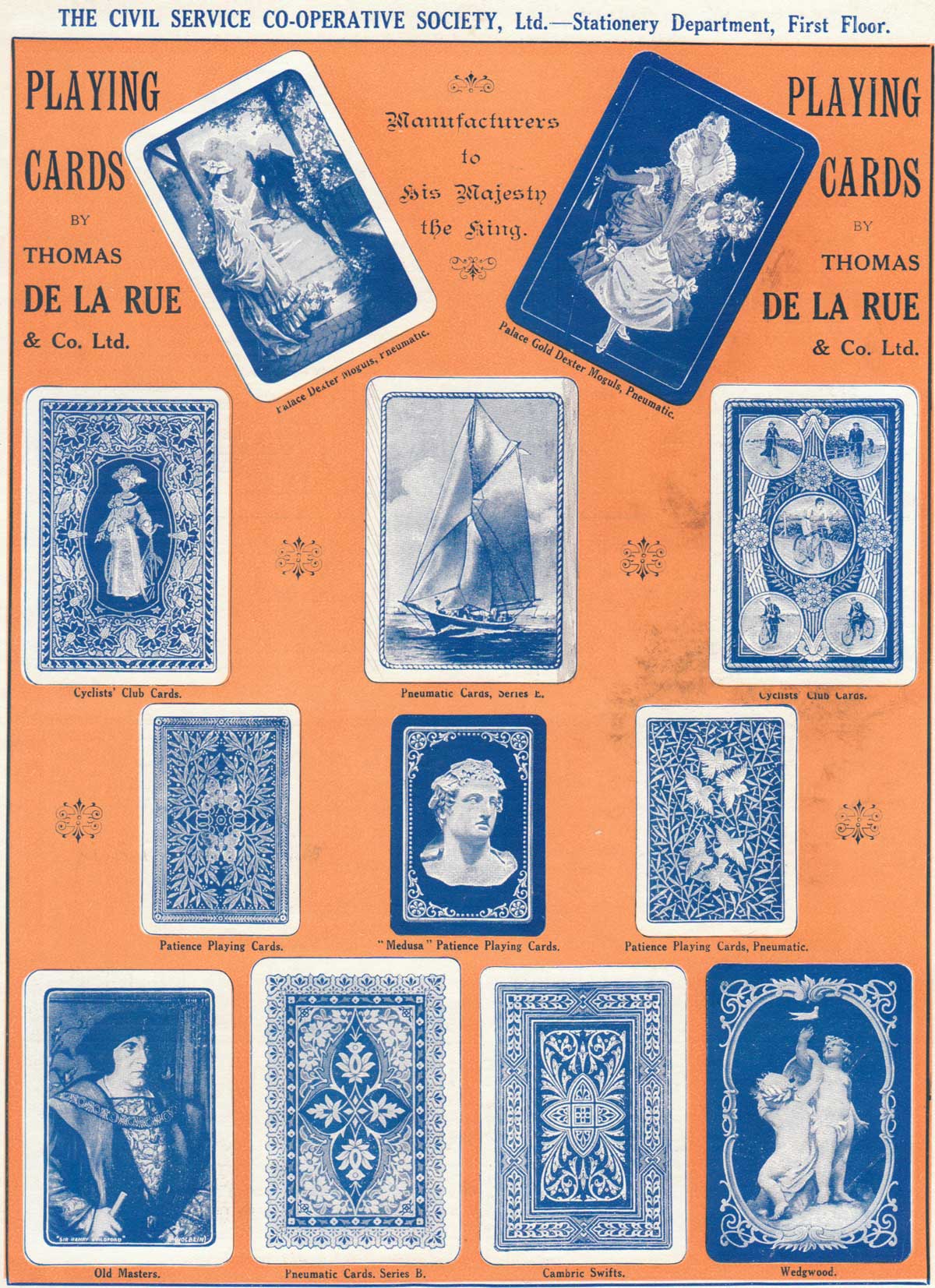

By Simon Wintle
Member since February 01, 1996
Founder and editor of the World of Playing Cards since 1996. He is a former committee member of the IPCS and was graphics editor of The Playing-Card journal for many years. He has lived at various times in Chile, England and Wales and is currently living in Extremadura, Spain. Simon's first limited edition pack of playing cards was a replica of a seventeenth century traditional English pack, which he produced from woodblocks and stencils.
Trending Articles
Popular articles from the past 28 days
Related Articles
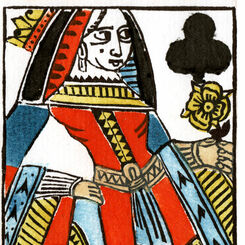
Woodblock and Stencil Queen of Clubs
A limited edition art print of the Queen of Clubs 1984 woodblock joker.
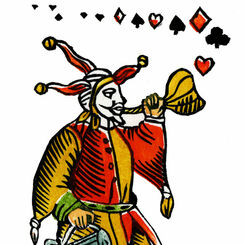
Woodblock and Stencil Joker
A limited edition art print of the 1984 woodblock joker.
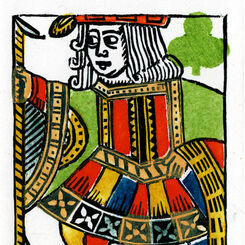
Woodblock and Stencil Jack of Clubs
A limited edition art print of the Jack of Clubs 1984 woodblock joker.
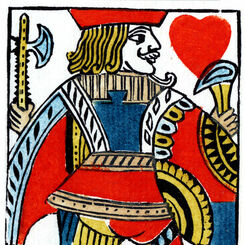
Woodblock and Stencil Jack of Hearts
A limited edition art print of the Jack of Hearts 1984 woodblock joker.
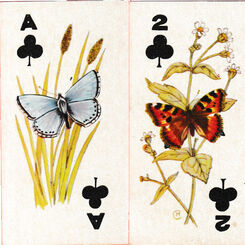
Sweetule Natural History cards
Small cards featuring natural history subjects, given away with packets of sweet cigarettes.
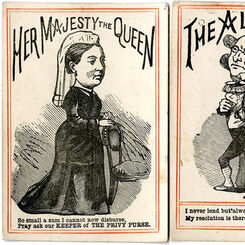
Lend Me Five Shillings
or “Her Majesty’s Privy Purse” - a merry round-the-table game published by D. Ogilvy.
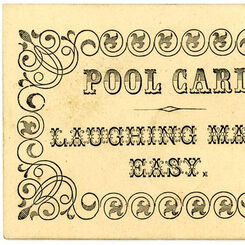
Laughing Made Easy
a Victorian card game published by D. Ogilvy.
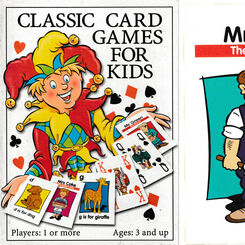
Classic Card Games for Kids
A boxed set of playing cards, Happy Families and an alphabet pack with rules for 22 games.
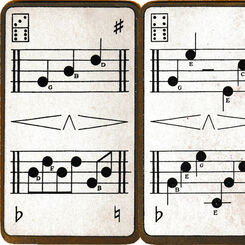
So-Lah – A Game of Music
An early 20th century domino-type musical card game by Goodall.
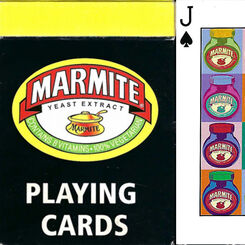
Marmite
Fifty-Four images celebrating a UK savoury spread, that has been around one hundred and twenty two y...
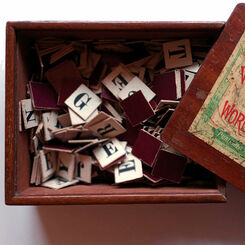
Word Making and Word Taking
How crossword and spelling games became popular.
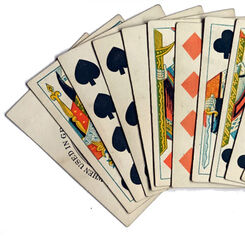
Managing cards without corner indices
For many hundreds of years cards had no corner indices, were square cut and mostly made from card wi...
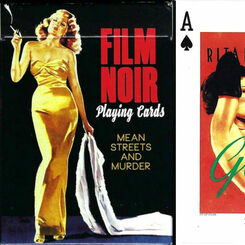
Film Noir
A deck of 55 cards, celebrating hard boiled heroes, wise-cracking women, mean streets, guns and gums...
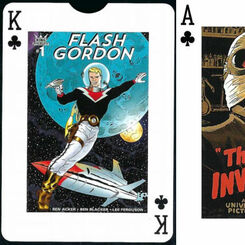
Science Fiction
A deck of 55 cards, celebrating a time when Science Fiction truly was, Science Fiction.
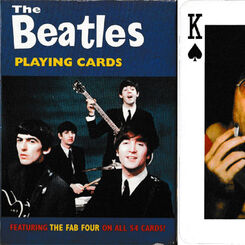
The Beatles playing cards
Two packs featuring photos of The Beatles issued by the same publisher in 2004 and 2005.
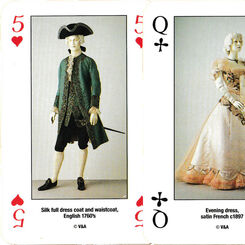
Costume Playing Cards
Four centuries of costumes from the Costume Court at the Victoria and Albert Museum.
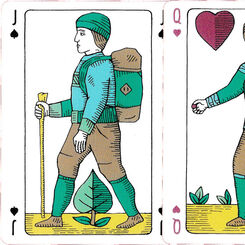
Commoners playing cards
Created by Ian Cumpstey dedicated to the common land and the countryside.
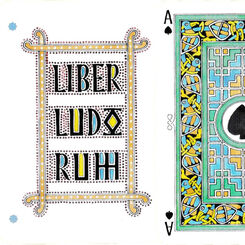
Liber Ludorum
Liber Ludorum playing cards created by Ian Cumpstey in the insular style, United Kingdom, 2019.
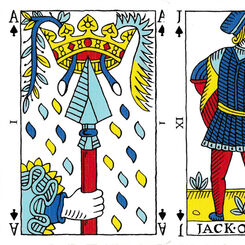
Pike and Clover playing cards
Pike and Clover playing cards created by Ian Cumpstey, Cumbria, UK, 2018.
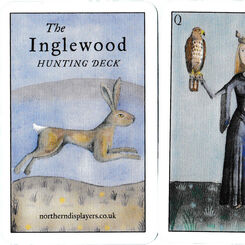
Inglewood Hunting Deck
Inglewood Hunting Deck created by Ian Cumpstey, United Kingdom, 2023.
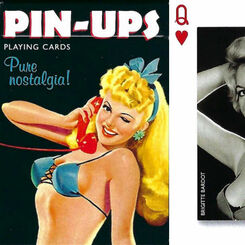
Pin-Ups
A deck of 55 cards celebrating a golden age of cheeky, naughty, bold and curvy ladies in film.
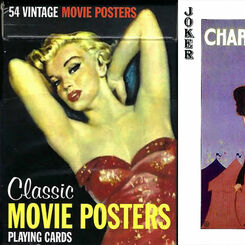
Classic Movie Posters
A deck of 55 cards presenting vintage classic movies and their stars.
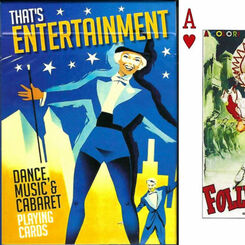
That’s Entertainment
A deck of 55 cards celebrating 20th Century vaudeville, musicals and cabaret.
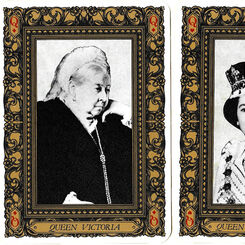
British Monarchs
Commemorating the royal wedding of Charles, Prince of Wales to Lady Diana Spencer on the 29th
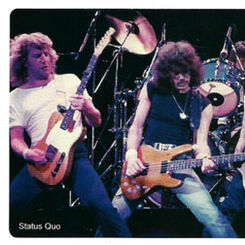
Rock & Pop Legends
Stunning photos of a selection of US and UK music artists.
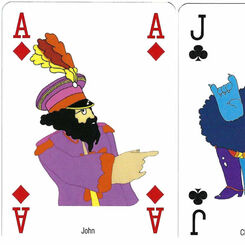
The Beatles • Yellow Submarine
A colourful deck celebrating the 1968 animated feature film based on the Lennon/McCartney song of th...
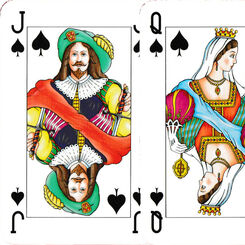
Dutch Court playing cards
Games & Print Services’ version of the Dutch pattern.
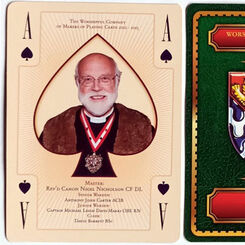
Past Masters’ Association Presentation Pack
The Worshipful Company of Makers of Playing Cards Past Masters’ Association Presentation Pack, 2013....
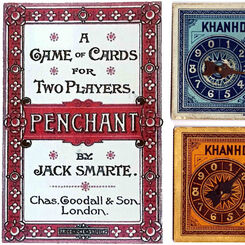
The Search for New Games in the late 19th century
A few new games survived and are still around today; most came and went and are only witnessed in th...
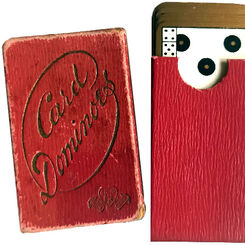
Miniature Card Dominoes
A miniature set of Goodall domino cards (5.9 x 3.5 cms) still in perfect condition.
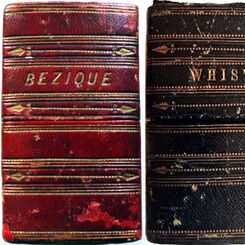
T. Drayton & Son
Bezique and Whist boxed sets by T. Drayton & Son, London, c.1875.
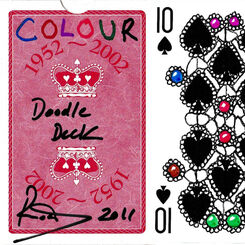
Colour doodle deck
“1952-2002 commemorative deck” customised with doodles by an uncredited artist, UK, 2011.
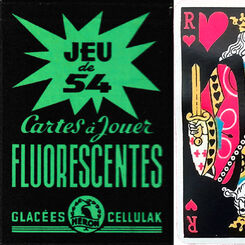
Cartes à Jouer Fluorescentes
Standard French cards but printed with fluorescent inks on a black background.
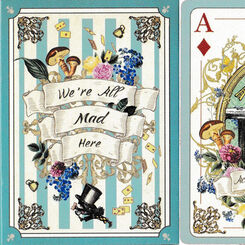
Alice in Wonderland: we’re all mad here
Alice in Wonderland themed playing cards, UK, 2020.
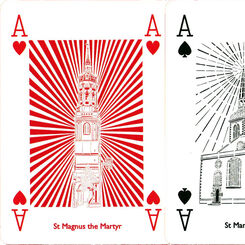
Wren 300 playing cards
Papercuts by Chloe Campbell of the 52 Wren churches in the City of London.
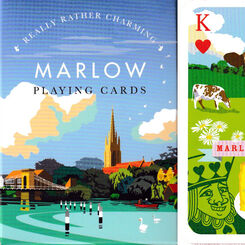
Marlow playing cards
Visitor attractions and businesses to be found in Marlow, Buckinghamshire.
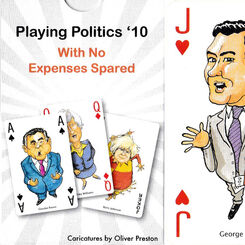
Playing Politics 2010
“Playing Politics ’10: With no expenses spared” featuring caricatures by Oliver Preston, published b...
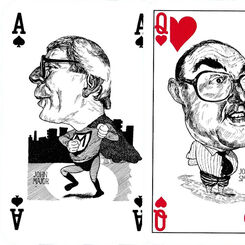
Playing Politics ’92: Pack of lies
Playing Politics ’92: Pack of lies with caricatures by Grant Robertson, UK.
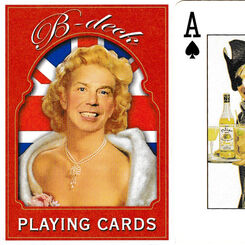
B-Deck
“B-Deck” scurrilous playing cards poking fun at a former UK prime minister.
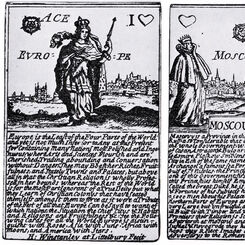
Winstanley Geographical cards
Facsimile of Winstanley’s Geographical cards produced by Harold & Virginia Wayland, 1967.
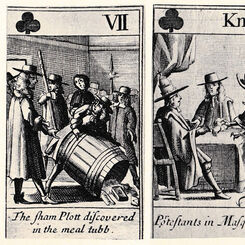
Meal Tub Plot
Meal Tub Plot playing cards [facsimile] with 17th century sketches by Francis Barlow.

Golf playing cards
Golf playing cards published by Marks & Spencer, UK.
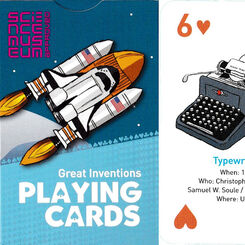
Great inventions playing cards
Great inventions playing cards designed by Gary Wyatt, United Kingdom, 2011.
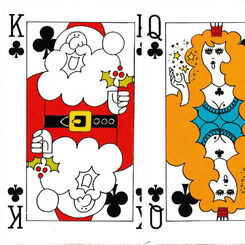
Christmas 1980 playing cards
Festive courts on a Waddingtons pack designed to celebrate Christmas 1980.


